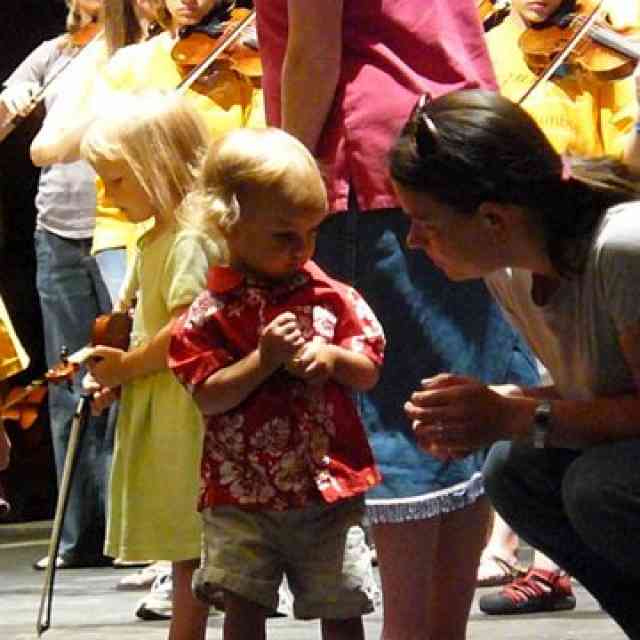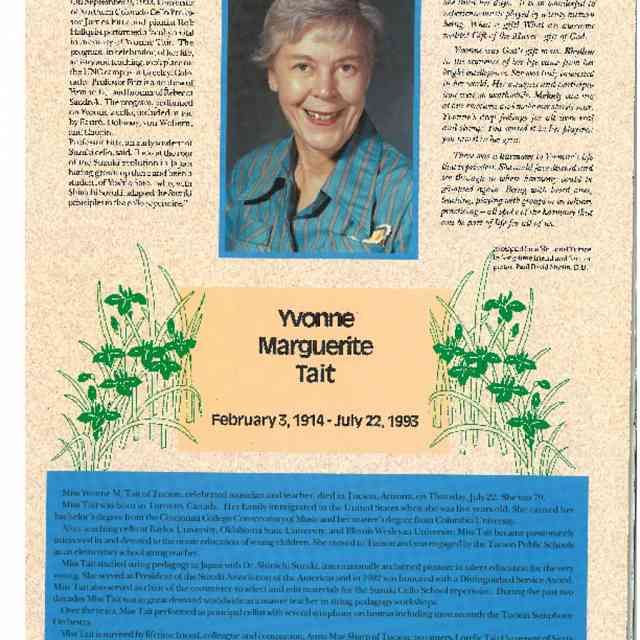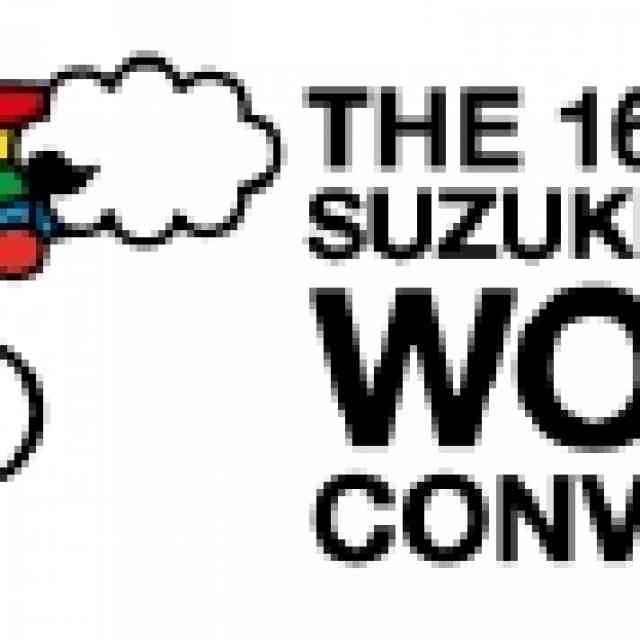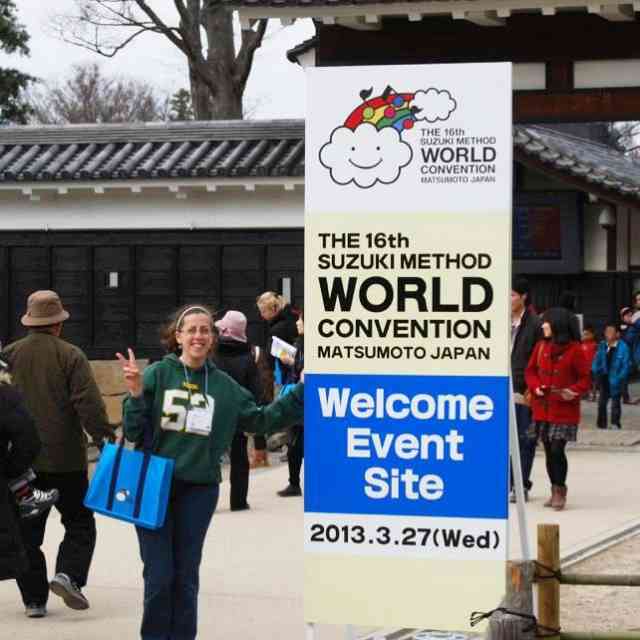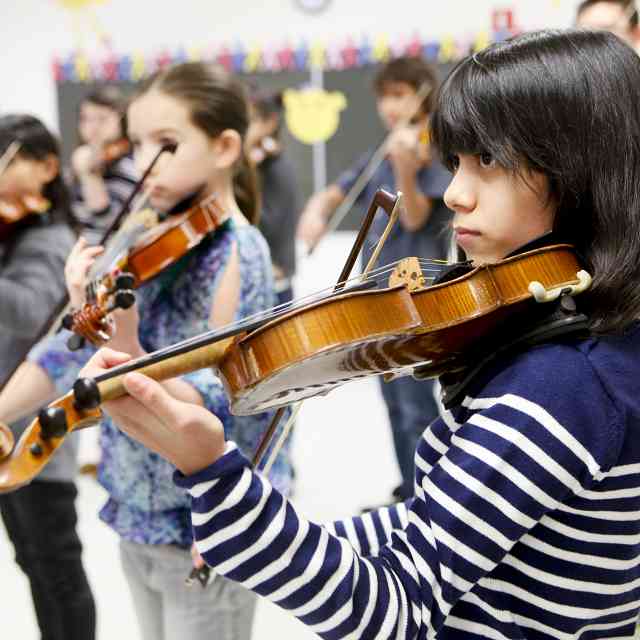Reprinted by permission, American String Teacher, Autumn, 1991
I recently had a conversation with a friend, a violinist in a major symphony orchestra, who also teaches privately:
S.P.: “You’re a Suzuki teacher, right?”
B.B.: “No, I am a violin teacher.”
S.P.: “But, don’t you use the Suzuki method?”
B.B.: “Yes, but I use other materials as well. What do you use?”
S.P.: “Well, I use Tune A Day, Laoureux, Wohlfahrt, Doflein and others.”
B.B.: “I use all of those, too.”
As our conversation progressed, we came to realize that we are really doing the same thing: teaching students to play the violin. I started to think about what being a “Suzuki teacher” means and how it compares with what has become known as being a “traditional teacher.” How are they different? How are they similar? Why is there a perceived distinction between the two? How does one draw from the other? Is there a transition from one to the other? At what point do they become the same? These are the questions that I am often asked by teachers and parents and would like to attempt to answer from an American perspective.
The Traditional School
It is only because of the tremendous impact that Suzuki instruction has had on string education that we have even added the term “traditional teaching” to our string vocabulary. Before Suzuki’s ideas were introduced in the United States nearly 30 years ago, what we now call traditional teaching was the customary way of teaching string instruments.
The traditional style of string teaching as we know it today is a real challenge to define since it is based on several hundred years of the development of the European schools of pedagogy and repertoire as handed down from generation to generation. Each of us can trace our own musical lineage through the teachers with whom we have studied—my own goes back to Ysaye, Auer and Persinger. All violinists can consider themselves to be the descendants of Corelli, the ancestor of all the great violinists.1 Many violinists and violists have been brought up on a steady diet of Sitt, Sevcik, Kreutzer, Galamian and Flesch; cellists on Dotzauer, Duport, Feuillard and Popper; bassists on Bille and Simandl; guitarists on Sor, Aguado, Giuliani, Carulli and Carcassi; and harpists on Bochsa, Renie, Salzedo and Grandjany. These are just a few of the developers of the traditional school. Each of these composers/pedagogues has made a significant contribution to the art of string teaching; there are many others who have had an impact on string technique through their teaching alone.
Given the many individual styles of playing and personalities, it is obvious that the traditional school of string teaching is influenced by changes in culture, society, fashion and public taste as well as the evolution of modern concert halls and string instruments themselves.
Shinichi Suzuki
Shinichi Suzuki was born in 1898 in Japan, the son of a Japanese violin maker, and studied in Berlin with Karl Klingler in the 1920’s. Klingler was a student of Joachim; therefore, Suzuki’s own musical background would be considered “traditional.”
He started his Talent Education movement in 1945 in Matsumoto after witnessing the devastation brought about by World War II and realizing the immense suffering of Japan’s innocent and precious children. He has spent many years developing his ideology and its application to violin teaching. Now in his mid 90’s, he rises at an early hour each day to meditate, read and teach.
Although his repertoire is published and commonly referred to as a “method,” it is actually an educational philosophy that can be applied to the teaching of any subject or skill to students of any age. The Suzuki Method core materials are now published for violin, viola, cello, bass, guitar, harp, piano and flute by Summy-Birchard Inc.
Since Suzuki is a violinist himself, the original repertoire was compiled for violin. For this reason and because the violin is perhaps most successfully scaled down to fit young children and is both portable and affordable, the approach is most popular for this instrument. William Starr calls Suzuki’s ten volumes of violin literature “a well-graded series of compositions for the development of the child’s technique and musical sensitivity.”2 Volumes 1 through 3 consist of some of his own compositions and many transcriptions of pieces from the classical literature, including the works of Bach, Beethoven, Brahms, Schumann, Dvorak and Boccherini. (Many of these same pieces are found in other collections of beginning and intermediate solos.) Volumes 4 through 10 consist of standard intermediate and advanced violin repertoire which has been used by traditional teachers for many years—the concertos of Seitz, Vivaldi, Bach and Mozart, the sonatas of Handel, Corelli, Eccles and Veracini as well as a number of shorter transcribed pieces. What could be more traditional than this literature?
The published repertoire for the other instruments mentioned follows the same carefully-planned order with each piece usually adding only one new technical or musical feature. Some selections are inserted periodically as plateau pieces which give the student an opportunity to polish a number of previously learned techniques and develop musically.
Many of the early pieces are common to all instruments, in particular, Suzuki’s Twinkle Variations, although they are transposed to appropriate keys for each instrument. There are also companion recordings of every volume, giving students the advantage of being able to hear the pieces and their piano accompaniments as they learn them. Herein lies one of the major contributions of his published materials: widely accessible recordings of beginning and intermediate literature are available to all teachers and students.
There is wide-spread misuse of Suzuki’s name. Parents and students think they are “taking Suzuki” when they are actually studying violin (or cello, viola, bass, guitar, harp, flute, piano). Small children have been referred to as “those cute little Suzukis” when they are actually very young string students. Teachers think they are “teaching Suzuki” when they ate actually employing the educational traditions and literature of many pedagogues and composers, including those of Suzuki. He is the first to admit the eclecticism of his approach and suggests that a “Suzuki” teacher should not refer to himself as such but should instead call himself a “Suzuki-Jones” or a “Suzuki-Smith” teacher.3 It would seem that there is no such thing as a “pure Suzuki” teacher since each of us adapts many ideas and techniques to evolve our own manner of teaching.
Basic Principles of the Suzuki Approach
The Suzuki way of teaching, based on his educational philosophy, is not a technical methodology, but does have unique characteristics of its own which distinguish it from traditional teaching. We will find that some of these ideas are shared to a certain extent by traditional teachers. My comments in italics contrast these concepts with those of traditional teaching.
1. The Suzuki philosophy is grounded in the precept that children can be educated through environment. Dr. Suzuki believes that every child is born with remarkable potential and, given stimulating musical surroundings and excellent training, he can learn to play an instrument. Hence the name, “Talent Education.” He eschews the traditional concept that the success or failure of a child’s musical ability is the result of his inborn talent. While some children may adapt more quickly or more sensitively than others as each develops at his own rate, every child can learn to play well, at whatever level he reaches. “Talent is not inherited or inborn, but trained and educated. Genius is an honorific name given to those who are brought up and trained to high ability.”4
He advises parents and teachers to nurture their children and students in an atmosphere of love, building their self-esteem with ever present patience, tolerance, praise and constant, positive reinforcement of these ideals. His purpose is not to groom students for professional careers, but to enrich their lives through the appreciation of fine music, and to bring them up to be sensible, sensitive and peace-loving human beings.
While every teacher would embrace the concepts of creating a favorable learning environment and providing all children the experience of classical music and its resulting benefits, some teachers of other instrumental methods are more inclined to encourage the more “talented” students who, early on, show considerable potential.
2. Suzuki-trained students begin at very young ages. Teachers using this approach have a particular affinity for teaching little ones. They may start students anywhere from the age of three to nine or ten. Ideally, they proceed with a slow, careful beginning and the child masters each step thoroughly before moving onto the next. His initial instruction consists of observing other students’ lessons, listening to recordings and often learning the position of the instrument and bow on some type of pre-violin/cello. Traditional teachers usually start students when they are older.
The foundation laid at any age is crucial, however, since the student builds on it for the rest of his life. The careless teaching of any beginning method causes irreparable damage if the student is moved too quickly, regardless of his age.
3. The Suzuki teacher establishes a partnership with the parent. A parent attends every lesson with the child, taking careful notes and asking questions so that he or she may become the home teacher during the rest of the week. The parents usually attend orientation sessions, sometimes learning to play the beginning pieces on the instrument themselves. This calls for organization and a substantial commitment in terms of time and energy on the part of the parent.
Any teacher welcomes support and encouragement from parents. However, they do not typically require the parent to take such an active role in the learning process.
4. Suzuki instruction teaches children to play the instrument before introducing note-reading. Dr. Suzuki calls his plan the “mother-tongue approach” since it follows the same procedure by which children learn to speak their native language: exposure, imitation, encouragement, repetition, addition and refinement. The student learns to play by imitating the recorded pieces he listens to many times each day. He internalizes each piece first and then is shown how to recreate it on the instrument. He masters many of the instrument’s technical difficulties and learns to communicate through it before he learns note-reading, just as he learns to speak before he reads from the printed page.
When Suzuki’s educational ideas were introduced in this country, American teachers were so enthusiastic about this new way of teaching children to play without the burden of using printed music that note-reading was too often neglected. Adapting the method to our culture, many perceptive teachers now teach the instrument and note-reading often from the beginning but as two separate skills. Beginners often attend reading-readiness classes or theory classes where they learn the basics of music notation as well as enjoy singing and musical activity games.
When does the Suzuki student begin reading music with the instrument? At the appropriate time, as determined by the child’s technical command of the instrument and his ability to focus on the printed page at the same time. The teacher makes this judgment for each student. Most teachers will incorporate note-reading into the lessons when the student is in Volume 2 and/or is of school age. New materials have been developed for these purposes and teachers are teaching note-reading earlier and with greater success than ever before.
Suzuki-trained students are often highly criticized because they do not read music as well as they play. They are unfortunate targets only because they play so well, are usually younger than their traditionally-trained peers and their reading skills have simply not yet caught up with the technical and musical levels of their playing. They are usually reading at a level that is appropriate to their age. We don’t admonish our five and six year olds when they speak English fluently but cannot yet read!
There are many students of other methods who also do not read well, but because they usually don’t play very well either, they are not faulted for poor reading skills. Many accomplished musicians cannot sight-read music at the same level that they can actually play. Some of the greatest jazz, folk and gospel musicians learn to play entirely “by ear.” Put very simply, traditional teaching is symbol before sound and Suzuki teaching is sound before symbol, which is, in fact, the world’s most “traditional” means of education.
5. Suzuki has eliminated the use of etudes in his graded course and uses scales and arpeggios sparingly. New techniques are introduced in the pieces themselves or with short exercises provided in the books. Teachers are expected to make up dozens of mini-drills in the easy volumes and supplement the later volumes with standard scales, technical studies and etudes. Dr. Suzuki’s easy pieces are written and arranged for young children; they are short, full of motion, fun to play and work well in groups. They are written in the keys of A, D and G, which utilize the ringing sounds of the open strings and encourage beautiful sounds on the fingered notes. They remain mainly on the upper strings which sound best on tiny instruments.
The genius of his first Twinkle rhythm, (which he borrowed from the opening of the Bach Double Concerto) lies in its introduction of the detaché and staccato bow strokes in a short musical entity using a vigorous, rhythmic bowing style. Every child’s face lights up when he can play his first “Mississippi Stop Stop” (only one of many names that this goes by). He is ready to play a solo! It is played in the middle of the bow, using the big muscles of the arm first; bow strokes are actually lengthened to full bows by the end of Volume 1.
Many traditional systems consist of page after page of rather dry technical exercises which use the whole-note, half-note, quarter-note approach, requiring the student to master the control of the full bow at the very start while also counting and learning to read music. These exercises have little or no musical interest and the method books do not contain as many pieces. Several months pass before the student sounds good enough to perform for others.
6. Suzuki instructors teach a common repertoire. Most teachers teach the first four volumes in sequence but, in the later volumes, the order of pieces is often varied and materials from many other sources are blended into the Suzuki literature. Most teachers who use the Suzuki repertoire are flexible within it, using the materials to suit the needs of each student.
Not every student, however, wants to play the same pieces that everyone else is playing. Traditional teachers have more flexibility in creating an individual agenda for each student. Many traditional teachers use the Suzuki materials with their students simply because they are such fine compilations of graded repertoire.
7. Suzuki-trained students continuously review previously learned repertoire. New pieces are added to their repertory just as children add words to their vocabulary. They are ready to perform at a moment’s notice. Review pieces are used to introduce new skills (shifting, vibrato, spiccato, etc.) and provide the vehicle for students to develop a higher level of musicality. Some teachers may not require systematic review of repertoire of their more advanced students.
The traditional student more characteristically drops a piece from his repertoire when a new one is started. When asked to play, he usually “doesn’t have anything ready.”
8. Suzuki-trained students perform frequently and from memory with ease. They appear on stage both as soloists and members of their teachers’ groups from the very beginning. The common repertoire serves as a built-in motivational mechanism: they are anxious to learn the pieces that the more advanced students are playing. Group classes, “play-ins,” performances in the community, solo recitals, graduation recitals and summer institutes give them many reasons to practice and to share their achievements with others. When they join their school orchestras, which they nearly always do, they have already had a great deal of ensemble experience.
Traditional students tend to lead more of a life of “solitary confinement.” They often do not have as many performance opportunities and their group experiences come only in their school orchestras and ensembles. The freedom away from the music stand that permits them to flourish as performers sometimes does not come until they are more advanced.
The Teacher Development Program
Teachers who are interested in Talent Education can receive specialized, intensive instruction with American teacher trainers who are approved by the Suzuki Association of the Americas and are highly respected pedagogues in their own right. The study is divided into units which parallel the repertoire books. A teacher may choose a specific book to study with a particular teacher trainer in the location of his choice. The study of the books is taught as short courses at summer institutes, as apprentice programs with individual teachers in private studios, or as long term comprehensive programs at colleges and universities which may offer degrees in Suzuki pedagogy. The teacher may register his units of study with the SAA, following the Teacher Development guidelines, and should take the units in sequence. The courses are designed for those already proficient on their instruments. Pre-requisites for the classes include playing knowledge of the book studied and familiarity with the Suzuki philosophy.
Teachers find this training to be stimulating and extremely valuable; it is applicable to any string teaching setting—in the private studio at the pre-college or college level as well as in the public school string class. The focus is not on accreditation, but on continued growth and development of the teacher. Teachers advertising themselves as using the Suzuki method are asked to belong to the SAA. No other organization offers this kind of systematic and comprehensive continuing education for string teachers, nor must they be affiliated with any association.
Common Misconceptions About Suzuki Teaching
The following views have been brought about by the skepticism and certain misinterpretations of individuals who are simply uninformed about this educational system. An attempt is made here to dispel such misconceptions:
1. Suzuki teaching is a group method. Suzuki students gain attention from the media because of the large group performances that are often presented giving the impression that this is the way they are trained. Contrary to what some may believe, the core of the program is actually the so-called private lesson. This might be more aptly termed the “individual” lesson since other students, parents and teachers are encouraged to attend in an air of openness.
2. Suzuki-trained students do not read music. As we have already seen, not teaching students to read music is not one of the principles of Talent Education. If students using this system do not read well, their teachers and parents are responsible.
3. Suzuki-trained students play like robots. In group playing, musical uniformity is stressed, just as it is in the string section of any professional symphony. Any teacher who does not encourage his students to develop individuality in their solo playing, however, should perhaps not be teaching at all, no matter what method he is using. Suzuki and traditional teachers alike provide examples of beautiful, musical playing for their students to emulate. That’s what teachers are for. While younger ones are musically molded and shaped as they imitate their teacher, more advanced ones are guided in what the teacher deems to be the most acceptable direction.
4. Advanced students must make a transition from “Suzuki” to “traditional.” Students working in the later volumes study supplementary materials and should have learned to read music well; a wealth of literature lies before them. They gradually become independent of the parents’ involvement in the lessons and practice. There is no point at which they stop being Suzuki students and become traditional students; there is no transition from one to the other because it is all the same thing.
5. Suzuki instructors teach with games and gimmicks. While teachers do employ creative imagery and ingenious games in both their individual and group teaching, especially with their youngest students, it is almost always done as a means to a musical or technical end. Traditional teachers also use many of these same kinds of teaching ideas. It really depends more on the individual teacher’s personality and teaching philosophy. Any kind of learning can be made fun.
6. Certain “Suzuki” procedures and techniques must be adhered to:
-
Many Suzuki teachers use the Japanese custom of asking the student to bow at the beginning and the end of the lesson as a sign of respect, to signify the focus of the lesson and to teach stage presence.
-
Some teach their beginning violinists to hold the bow with the thumb on the outside of the frog.
-
Tapes are often placed on beginners’ fingerboards to ensure accurate pitch and on the bow to indicate bow distribution.
-
Some followers of Suzuki’s methodology believe that the violinist’s right arm must be extremely low. This may be the result of the old “book-under-the-arm practice that was held in high esteem in Germany in the late 19th century. (It has been a major point stressed by Dr. Suzuki in recent years. He advocates the low elbow as a means to develop a deeper tone by way of heavy weight from the arm rather than pressure on the bow.)
There are no specific directives given to teachers about any of these practices. They are only peripherals and are not essential to the Suzuki approach. Teachers might use them for a short lime, to a certain degree or not at all.
7. Suzuki teachers must be certified. As described previously there is no “teacher certification,” only registration with the SAA of teacher training units which have been completed. Many teachers call themselves Suzuki teachers regardless of the amount of training or music degrees they have.
Without a thorough understanding or dedication to the philosophy, some teachers use the name “Suzuki” or “Talent Education” because of the drawing power it has; this well-known educational system attracts parents and their children to their studios. Many work well within the structure of an organized curriculum.
Others may de-emphasize this identification or avoid it entirely because they feel it is too restricting; they don’t want to become known as instructors who teach only small children which, to the uninformed, it sometimes implies.
There are also those who use what might be called a “modified” Suzuki approach, employing some but not all of the principles involved. Most of Suzuki’s ideas are not new, but they have been codified into a systematized approach. He has given teachers wonderful examples of how to teach young children. Many “traditional” teachers use some of the same principles in both private and string class teaching.
Problems in Talent Education
Lest you think I have written this article to simply expound the virtues of the Suzuki approach, I have not. Talent Education is certainly not immune to some of the pitfalls of string teaching in general. Like any other educational process, it is only as good as the teacher who teaches it. In my seventeen years of experience with Suzuki teaching, I have become aware of the following situations:
-
Because of the parental involvement, the use of recordings and the postponement of note-reading, some young children progress very rapidly through the volumes and find themselves into some major repertoire, a Mozart concerto, for instance, before they are technically and emotionally ready. Some parents and teachers become fanatical about the number of pieces and volumes completed at the expense of quality playing.
-
There is a preponderance of Baroque music in the Suzuki repertoire and some very big technical jumps at the advanced levels. Teachers are complementing the later volumes now more than ever before with pieces from other sources that provide more stylistic and technical variety and give the student the chance to grow more gradually into the major repertoire.
-
Older students can become overly dependent on a.) the recordings—they can pick up a new passage by ear much more quickly than they can work it out from the printed page; b.) their parents, who have been carrying their instruments around, organizing their music and getting them ready to play since they were very young; and c.) their teachers, who have been tuning their instruments, marking their music and helping them learn everything (often “spoon-feeding” every note) from the beginning. They sometimes have a difficult time developing the independence that traditional students have. This is not, however, the province of only Suzuki-trained students. Even teachers at the college level are heard to complain that their students don’t know how to think for themselves!
-
American audiences have the opportunity to hear the Talent Education Tour Group made up of some of Japan’s finest young musicians as they concertize in the United States each fall.
Conclusion
They are always inspiring performances for students, parents and teachers. However, in an effort to keep up with the Japanese children and the recordings they listen to, American Suzuki students have a tendency to play loud, louder and loudest (Dr. Suzuki constantly emphasis BIG TONE) and fast, faster and fastest (”Matsumoto tempo’). This becomes more exaggerated when the students play in large groups. But again, this is not a problem that only Suzuki-trained students develop. All groups of young string players have a natural tendency to rush and play too loudly if their teachers do not teach the subtleties of sotte voce and tempo control.
And so we see that the differences between Suzuki and traditional teaching are mostly in the beginning stages and are philosophical rather than technical. William Primrose describes his skepticism of what he believed to be an “assembly line” approach, an attitude typical of many musicians of his generation. After traveling to Japan with his wife, Hiroko, to spend time with Dr. Suzuki and hear his students at the Talent Education Institute in Matsumoto, Primrose realized how his own upbringing was surprisingly similar to Suzuki’s ideology: he had been nurtured from an early age in an inspiring musical environment by devoted parents. He was a “counterfeiter” like every other child. Suzuki’s method of teaching violin is, per se, not very much different from many others. His uniqueness lies in his impressive ability to develop these little ones and to enrich their lives.”5
Whether we call ourselves “traditional” or “Suzuki” teachers, each of us should take advantage of every possible opportunity to improve our own playing and teaching, extracting ideas from many sources and combining them with our own to develop a personal style. “To the skilled and creative teacher, any established ‘method’ serves as a general framework for a point of departure, and the practical matter of day to day teaching is a living art which is constantly growing and developing.”6 We build our reputations as teachers, whether it be good or bad, on the students we produce and the examples they set for others. Our beginning steps may be different, but our goals and hopefully our end results are the same: to have a positive influence on the young people whose lives we help shape as we teach them the enjoyment of playing a string instrument, and to instill in them a meaningful appreciation of fine music.
Notes
- Boris Schwarz, Great Masters of the Violin (New York, NY: Simon and Schuster, 1983): p. 49. ↩
- William Starr, The Suzuki Violinist (Knoxville, T976): p. 17. ↩
- Ray Landers, Is Suzuki Education Working in America? (Chicago, IL: Daniel Press, 1987): p. 12. ↩
- Shinichi Suzuki, Nurtured by Love (New York, N.Y.: Exposition Press, 1969): p. 31. ↩
- William Primrose, Walk on the North Side (Provo, Utah: Brigham Young University Press, 1978): p. 218. ↩
-
Stephen Lo, A Reading Course For Suzuki Piano Students (Dissertation in progress).
↩

